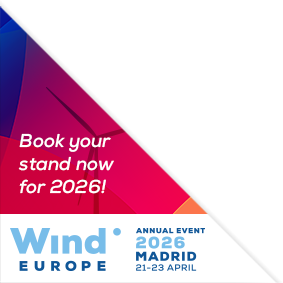Posters
Siblings:
ProceedingsProgrammeSpeakersPostersContent PartnersPowering the Future stageMarkets TheatreStudent programmeResearch & Innovation in actionProgramme Committee & abstracts reviewersPresenters’ dashboardCome meet the poster presenters to ask them questions and discuss their work
We would like to invite you to come and see the posters at our upcoming conference. The posters will showcase a diverse range of research topics, and will give delegates an opportunity to engage with the authors and learn more about their work. Whether you are a seasoned researcher or simply curious about the latest developments in your field, we believe that the posters will offer something of interest to everyone. So please join us at the conference and take advantage of this opportunity to learn and engage with your peers in industry and the academic community.
On 9 April at 17:15, we’ll also hold the main poster session and distinguish the 7 best posters of this year’s edition with our traditional Poster Awards Ceremony. Join us at the poster area to cheer and meet the laureates, and enjoy some drinks with all poster presenters!
We look forward to seeing you there!

PO096: Conceptualization and optimization studies for offshore wind farms- techno-economic consideration
Mario Pérez Rodríguez, Energy Consultant, Hitachi Energy
Abstract
The work focuses on optimizing the system configuration of offshore wind farms to enhance efficiency and meet European Connection Conditions (ECC). The study evaluates three configurations for reactive power and voltage control: Fixed Shunt Reactor with STATCOM (Case 1), Variable Shunt Reactor (VSR) with STATCOM (Case 2), and Mechanically Switched Reactors (MSRs) with STATCOM (Case 3). Case 1 uses fixed shunt reactors permanently connected to the wind farm, providing constant reactive power consumption. This configuration is the most economical but lacks operational flexibility. In contrast, Case 2 features VSRs equipped with on-load tap changers, allowing dynamic adjustment of reactive power based on wind farm generation. This setup offers better technical performance and flexibility but comes at a higher cost. Case 3 involves MSRs connected to the tertiary of the onshore transformer, which can be switched on or off based on generation. This configuration optimizes reactive power response and reduces STATCOM size but is the most expensive and involves higher maintenance risks. The study includes detailed simulations and a comparative analysis of technical, economic, and risk factors for each configuration. Key aspects evaluated in the study include equipment loading, reactive power capability, voltage control, and equipment sizing. The findings suggest that while Case 1 is the most cost-effective, Case 2 provides the best balance between cost and technical performance. Case 3 offers good flexibility and control but at a higher cost and risk. Overall, the presented work aims to provide insights into the trade-offs between flexibility, cost, and technical performance in selecting reactive power compensation strategies for offshore wind farms. This knowledge is crucial for making informed decisions about optimizing performance, managing costs, and mitigating risks effectively in large-scale offshore wind projects.



